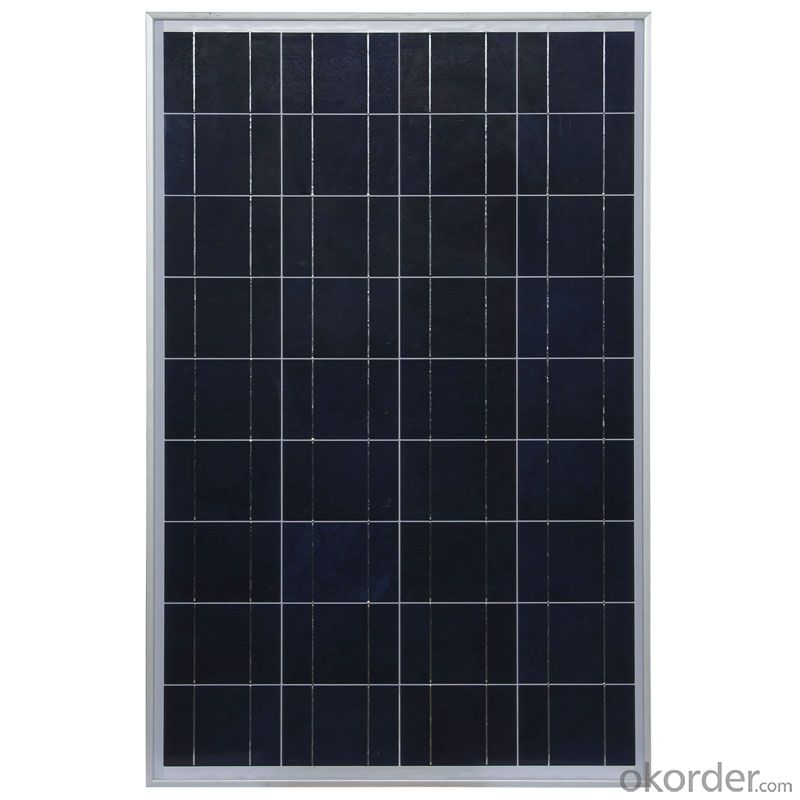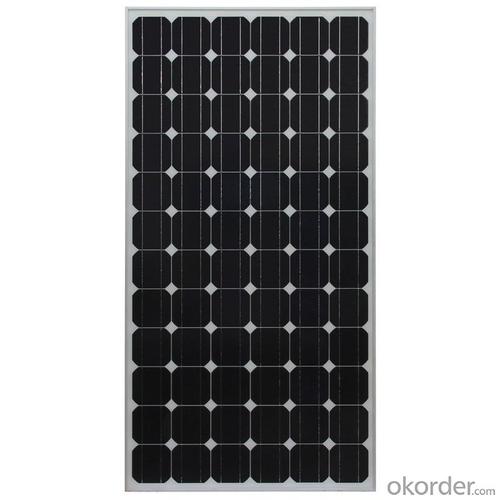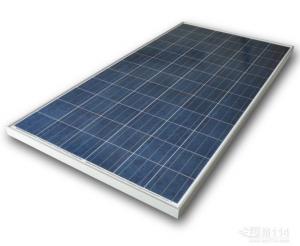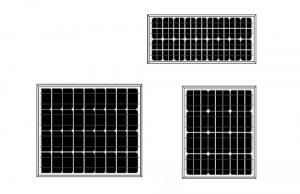Grade A Solar Panels for A Mobile Home with TUV and UL Certificate
- Loading Port:
- Tianjin
- Payment Terms:
- TT OR LC
- Min Order Qty:
- 1000 watt
- Supply Capability:
- 10000000 watt/month
OKorder Service Pledge
OKorder Financial Service
You Might Also Like
Specification
Product Description
Power: 250W
Open-circuit voltage (Voc): 44.75V
Short-circuit current (Isc): 8.45A
Optimum operating voltage (Vmp): 35.28V
Optimum operating current (Imp): 7.94A
Material: aluminum alloy
Type: anodized
Type of junction box: PV
Thickness: 45mm
Dimensions: 1956 x 992 x 50mm
Certification: CE
Compliant with RoHS Directive

Product Details
Product Certifications:
Certificate Standard:TUV View scanned certification
Certificate Number:PV 50213194Check in TUV database
Issue Date:21-Sep-2011
Issued By:TUV Rheinland LGA Products Gmbh
Expiry Date:20-Sep-2016
| ELECTRICAL CHARACTERISTICS | ||||||||||
| Maximum Power as per STC | Pmax(W) | 230 | 235 | 240 | 245 | 250 | ||||
| Power Tolerance | % | ± 3% | ||||||||
| Maximum Power Voltage | Vm(V) | 30.48 | 30.6 | 30.66 | 30.35 | 30.46 | ||||
| Maximum Power Current | Im(A) | 7.6 | 7.68 | 7.83 | 8.08 | 8.21 | ||||
| Open Circuit Voltage | Voc(V) | 36.6 | 36.72 | 36.84 | 36.36 | 36.5 | ||||
| Short Circuit Current | Isc(A) | 8.17 | 8.23 | 8.32 | 8.79 | 8.93 | ||||
| Maximum System Voltage | VDC | 1000 | ||||||||
| Cell Efficiency | % | 15.8 | 16.1 | 16.4 | 16.8 | 17.1 | ||||
| Module Efficiency | % | 14.1 | 14.4 | 14.7 | 15.0 | 15.3 | ||||
| Cells per Module | Pcs | 60 | ||||||||
| Cell Type | Polycrystalline silicon | |||||||||
| Cell Size | mm | 156 x 156 | ||||||||
| Bypass Diodes | Pcs | 12Amp, 6 pcs | ||||||||
| Max. Series Fuse Rating | A | 15A | ||||||||
| Temperature coefficient of Isc | % / | 0.05 | ||||||||
| Temperature coefficient of Voc | % / | -0.35 | ||||||||
| Temperature coefficient of power | % / | -0.47 | ||||||||
| NOCT- Nominal operating cell temperature | 47 ± 2 degree | |||||||||
| Operating Temperature | -40 to +85 degree | |||||||||
| MECHANICAL CHARACTERISTICS | ||||||||||
| Dimensions | mm | 1650 x 990 x 50 | ||||||||
| Weight | Kg | 19.8 | ||||||||
| Type of Junction Box | TUV certified, IP65 | |||||||||
| Cable Type, Diameter | TUV certified, 4mm 2, 90 cm in length | |||||||||
| Connector | compatible to Type 4 (MC4) | |||||||||
| Tempered Glass | 3.2 mm, high transmission, low iron | |||||||||
- Q: I have to get a lot of information on how solar panels are developed and distributed in America because I have to do two pages on this. Please help me get information in this I really need it!! Thankss...
- The first link below is one of the best sites for recent news about solar panels. You should be able to find stories about solar panels under development today. A little bit of the history: Solar panels have been around for about 50 years now. They were first used to power spacecraft. Solar power for domestic use started to develop rapidly in the 970's during the first oil crisis, but as energy prices fell in the 980's solar development slowed. Most of the large solar panel makers were purchased by large oil companies who seemed not to be too interested in solar. In the late 990's as concerns about both Peak Oil and Global Warming grew there was renewed interest in solar power and a number of new companies were started to develop new kinds of solar panels. Many of these new companies have grown larger than the older solar companies still owned by big oil companies. Over the last 7 years or so growth in the solar market has been explosive with a compound growth rate of almost 40% per year. In 2005 the solar industry for the first time started to consume more silicon than all other electronic industries combined resulting in a world wide silicon shortage that is still with use. New silicon refineries are coming on line and the shortage is expected to diminish by 2008 or 2009. Check out the two links below. They will help you a lot.
- Q: I need to build a battery array to use with my solar panels I just bought. I want to be able to store enough energy to be draw from it at night, possibly around the clock. Is there a down side to using the deep cycle battery I bought from autozone and 6 or 7 more just like it, or do I need to get some other battery?
- There are batteries particularly made for solar, such as the Trojan T05-RE . I think the RE stands for renewable energy. A deep cycle battery should work all right, although not quite as well. What you want to do is try out your setup first, with just one battery, and the panels provided. If this is one of those 45 watt kits, you may be surprised at how little energy you actually get from the panels. Increasing the number of batteries won't help, either - that's like getting a larger water tank, when you only have a trickle to fill it. If your goal is really to save money, the most cost-effective solar is the grid-tied type, with no batteries at all. That's what we have, and I've never regretted it.
- Q: I have created a solar setup in my shed i have 2x.5w solar panels i am hoping to charge my 55ah car battery how long would it take to charge the battery and how many watts could i used a day
- To charge a 2V lead acid battery, you pretty much have to put almost 24V across it and it's only 50% efficient at charging so if your solar panel does put out 3W, you can expect 3/24/2 or /6th of an amp in usable charging. Therefore, from a flat battery, it would take 55*6 or 880 hours to charge the battery. If you assume about 6 hours of usable sunlight per day, that would be 47 days not taking into consideration the normal leakage that lead acid batteries have. It's quite likely that the leakage rate will be greater than the charging rate and the battery will never charge. You'll need a bigger solar panel.
- Q: Solar Panels not working very well, they have faded. Is there any paint or anything else I can do to restore them? Thanks Eileen
- Unfortunately Eileen the panels are bound to fade as its par for the course. Over time much like everything else (from an AC condenser to your knees and hips) everything starts to go south. When did you purchase and install your panels? If this was done within the past few years then something is definitely wrong, and you should have the manufacturer and installer come back and replace the panels....on their dime of course. Is the warranty on your panels still in effect? If so then its definitely something that they have to come back and take care of. There is a company I know of called Sun Electronics that has a 20 year warranty on their products, so if its worth anything you might want to buy your new panels/system from them. The panels around today are more efficient than those of years past, and with the cost coming down due to economies of scale and the tax incentives you might want to consider getting a new system. Sorry to let you down though Eileen!
- Q: Can solar panels be installed in areas prone to hurricanes or tornadoes?
- Yes, solar panels can be installed in areas prone to hurricanes or tornadoes. However, it is important to design and install the solar panel system with the specific weather conditions in mind. This includes using appropriate mounting systems, ensuring proper anchoring and reinforcement of the panels, and using high-quality materials that can withstand strong winds. Additionally, regular maintenance and inspections should be conducted to ensure the panels remain in optimal condition.
- Q: Can solar panels be installed on warehouses or industrial facilities?
- Yes, solar panels can definitely be installed on warehouses or industrial facilities. In fact, these large commercial buildings often have ample space on their roofs or surrounding areas, making them ideal locations for solar panel installations. By harnessing renewable energy from the sun, warehouses and industrial facilities can reduce their reliance on traditional energy sources, lower their electricity costs, and contribute to a more sustainable future.
- Q: Is it good? ( solar energy)
- How image voltaic Cells artwork through Scott Aldous interior this text a million. advent to How image voltaic Cells artwork 2. Photovoltaic Cells: changing Photons to Electrons 3. How Silicon Makes a image voltaic cellular 4. Anatomy of a image voltaic cellular 5. means Loss in a image voltaic cellular 6. image voltaic-powering a house 7. fixing image voltaic-means subject concerns 8. image voltaic-means experts and Cons 9. so lots extra counsel 0. See all actual technological know-how articles you have in all threat seen calculators that have image voltaic cells -- calculators that for the time of no way choose batteries, and on occasion do not even have an off button. as long as you have sufficient mild, they seem to artwork continuously. you're transforming into seen extra beneficial image voltaic panels -- on emergency highway signs and indicators or call bins, on buoys, even in parking lots to means lights fixtures. even if those extra beneficial panels are not so straight forward as image voltaic powered calculators, they're obtainable, and not that problematical to become attentive to in case you recognize the place to look. There are image voltaic cellular arrays on satellites, the place they're used to means the electric powered systems. you have in all threat additionally been listening to on the subject of the image voltaic revolution for the final 20 years -- the theory that sooner or later we are able to all use unfastened electricity from the solar. this could be a seductive promise: On a stunning, sunny day, the solar shines approximately a million,000 watts of means in line with sq. meter of the planet's floor, and if we could desire to deliver at the same time all of that means we could desire to truly means our residences and places of work for unfastened.
- Q: but is that per day, per hour or minute?How much watts does the average AC unit use?How much does an energy efficient lightbulb use?All in all let's hypothetically say we no longer use the electric company for our energy source, How many of these panels do you estimate it would take to supply our small home?
- To calculate an estimate of your power usage, follow the first link below. Although you can have whatever sized system you want (at a cost) those on solar power generally keep their power usage down by cooking on gas, not using an electric kettle, using low energy light bulbs. Powering AC would up your power requirements considerably. We run a medium sized house on 860 watts of panels in southern Spain (plenty of sunshine). That includes the washing machine, pool, and running two laptops and wireless network all day,and a ceiling fan on summer nights. Hower we cook on gas, would not consider AC, and the fridge runs on gas (though if the fridge had to be replaced I would buy electric and add an extra pv panel). For an overview of the equipment required and what it does, check the second link below.
- Q: Can solar panels be installed on a commercial building?
- Yes, solar panels can definitely be installed on a commercial building. In fact, many businesses are increasingly adopting solar energy to reduce their carbon footprint, save on electricity bills, and take advantage of various incentives and tax credits available for renewable energy installations. Commercial buildings often have ample roof space and large surface areas, making them ideal for the installation of solar panels. Additionally, advancements in solar technology and the availability of flexible mounting options make it easier to integrate solar panels into commercial building designs.
- Q: I need to know where I can buy the parts or find them as scrap to make my own solar panels. Is there a cheap way of buying the panels or can I make them myself.
- Build okorder
Send your message to us
Grade A Solar Panels for A Mobile Home with TUV and UL Certificate
- Loading Port:
- Tianjin
- Payment Terms:
- TT OR LC
- Min Order Qty:
- 1000 watt
- Supply Capability:
- 10000000 watt/month
OKorder Service Pledge
OKorder Financial Service
Similar products
Hot products
Hot Searches
Related keywords




























